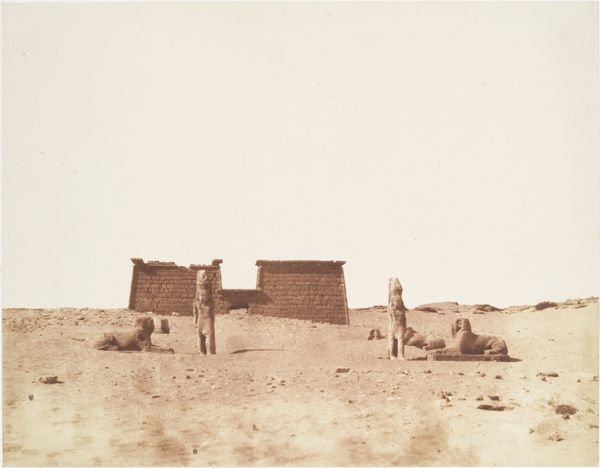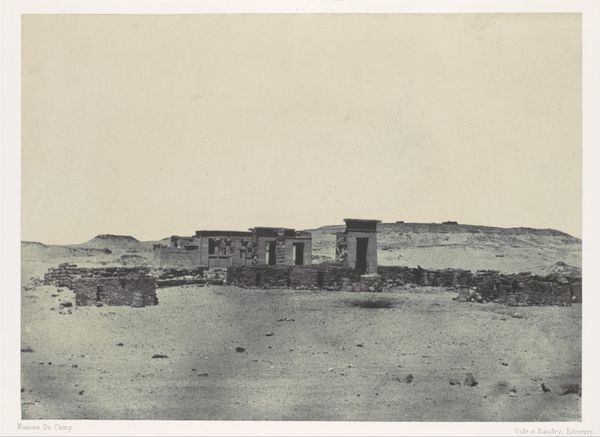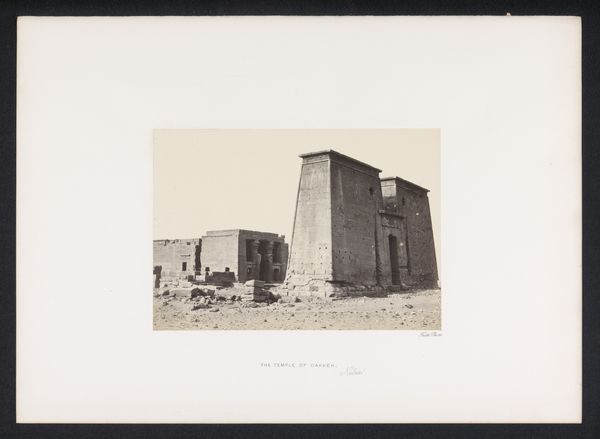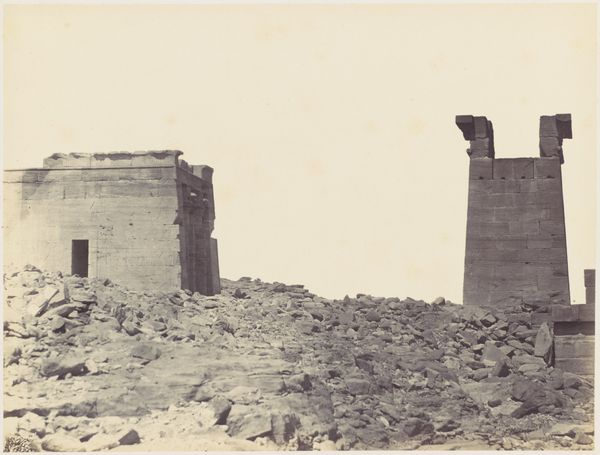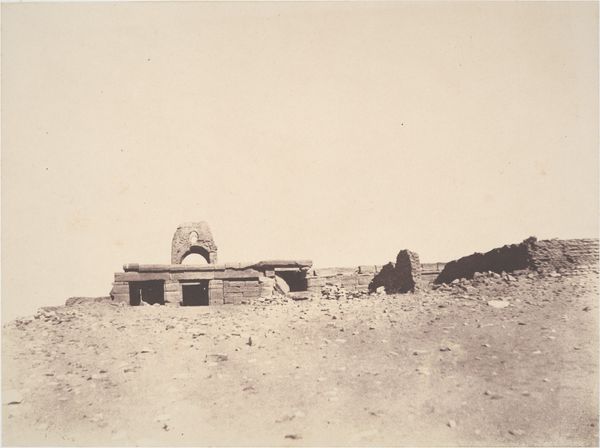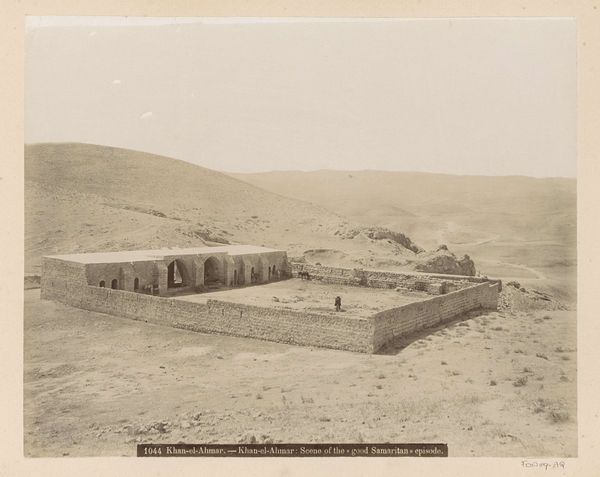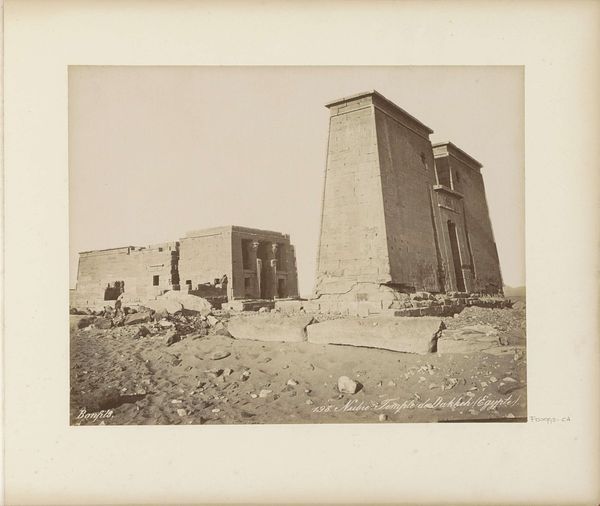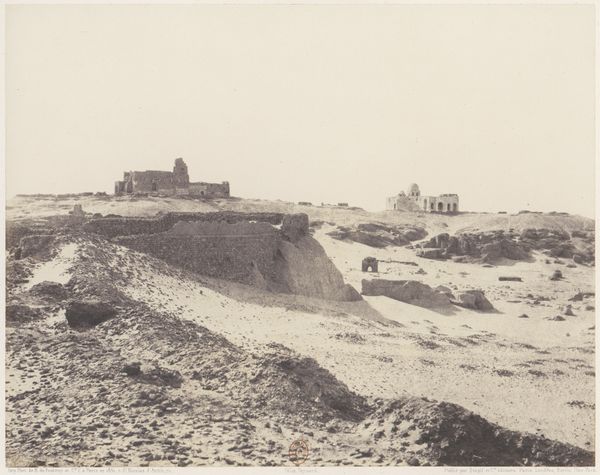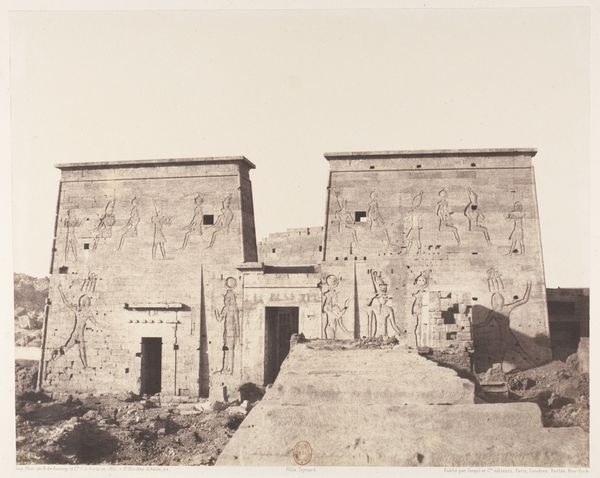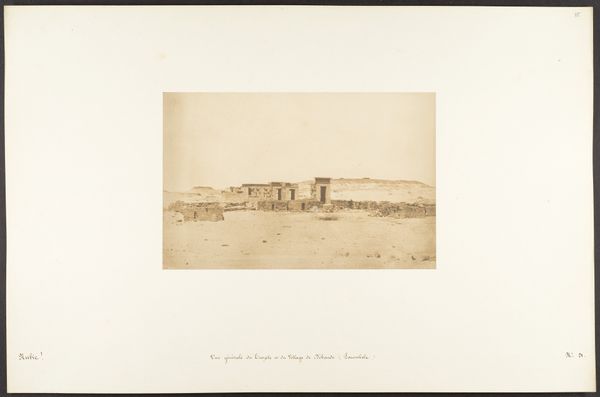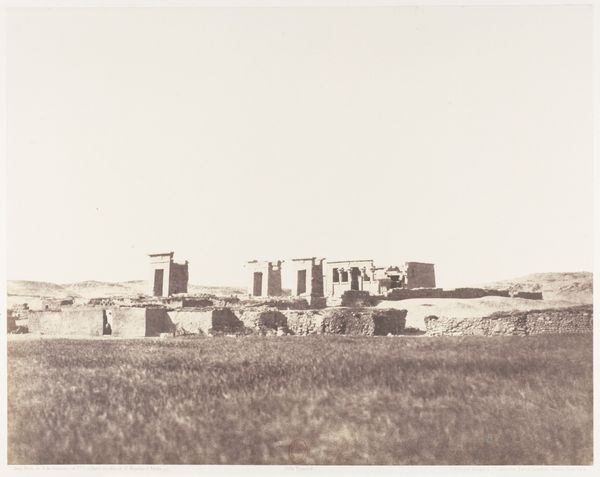
daguerreotype, photography, architecture
#
landscape
#
daguerreotype
#
ancient-egyptian-art
#
photography
#
architecture
Dimensions: 23.1 x 30.2 cm. (9 1/16 x 11 7/8 in.)
Copyright: Public Domain
Curator: Looking at this daguerreotype by Félix Teynard, entitled "Dakkeh (Pselcis), Vue Générale du Temple," created between 1851 and 1852, what immediately strikes you? Editor: A kind of stark desolation, wouldn't you say? The structures look imposing, but small in contrast to the expansive sand. It suggests both permanence and fragility. Curator: Precisely. Consider the colonial context. Teynard was part of an expedition following Napoleon’s earlier ventures. His photographs served to document and, in a way, claim this space through visual representation. How do we grapple with the ethics of such visual archiving today, when these images were made with specific power dynamics at play? Editor: Well, the temple itself becomes a signifier of endurance, outlasting empires. Temples have always stood as symbols of societal order, acting as sacred grounds with significant power. But through Teynard's lens, the human element is almost absent, accentuating the symbolic authority and permanence of the sacred monument over temporary political agendas. Curator: And how do we interpret this absence? It's tempting to read the depopulated scene as an assertion of colonial power – a blank canvas for imperial projection. However, the visible deterioration of the temple also speaks to a disruption of that perceived power dynamic. The ruins push us to question these claims of dominance. Editor: Indeed. These Egyptian ruins communicate a kind of memory – visual and cultural. The symbolism in the temple's architecture - now faded – remains deeply rooted in its cultural function, and even in its current ruinous state, offers historical testimony to something beyond purely political maneuvering. Curator: Absolutely. When engaging with artworks from such charged contexts, the challenge lies in confronting these histories head-on, acknowledging the complicated relationship between artistic creation and its implications for cultural understanding. Editor: It’s that act of acknowledging what's gone and finding new perspectives on what endures. An interesting reminder of the long echoes of history in visual culture.
Comments
No comments
Be the first to comment and join the conversation on the ultimate creative platform.
